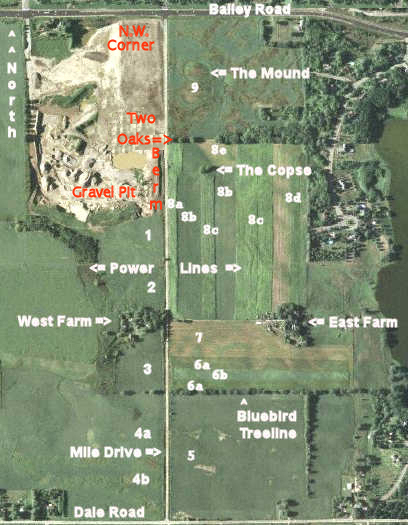
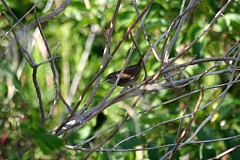 No house is in sight, but nontheless here is a small brown songbird the House Wren
(Troglodytes aedon), also known as a Common Wren.
The House Wren has one of the largest ranges of any songbird in the New World. It
breeds from Canada, through the West Indies, through
Central America, southward to the southernmost point of South America.
Return to Birds
No house is in sight, but nontheless here is a small brown songbird the House Wren
(Troglodytes aedon), also known as a Common Wren.
The House Wren has one of the largest ranges of any songbird in the New World. It
breeds from Canada, through the West Indies, through
Central America, southward to the southernmost point of South America.
Return to Birds
|
|
The House Wren is an active little bird and likes being near the gardens and orchards.
This bird's flight is short and low and sometimes the tail is erect.
It's diet is insects such as caterpillars, flies, aphids, spiders, beetles, grasshoppers,
crickets and moths.
|
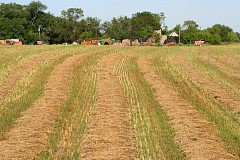
The oats in Field #7 have been cut.
|
|
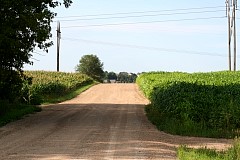
Heading north by the farm driveways is corn on the left and sedan grass on the right.
|
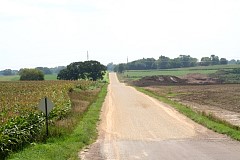
Looking south near the intersection with Bailey Road.
|
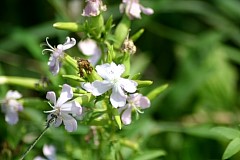
Look at the bottom left of this picture of Bouncing Bet and you will see a dragonfly.
|
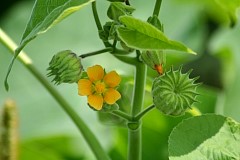
Velvet Leaf (Abutilon theophrastii) is also called Indian Mallow.
Velvet-leaf was introduced into North America in the late 1700's to early 1800's.
It is a native of India and is now a major weed of cropland.
Return to Flora
|
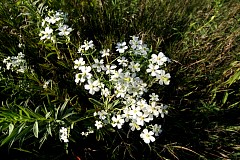
Flowering Spurge (Euphorbia corollata) This native plant is considered a serious weed -
it's poisonous. It's common name, "Spurge" comes from the Latin word "expurgare," "to purge," because the plant has been used as a laxative, in very small doses, but it can be fatal in large ones.
The flowers and have 5 petals "bracts" and develop protruding green pods.
|
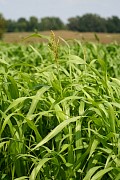
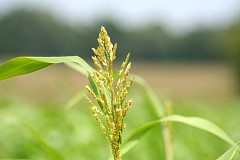
I believe the Sedan Grass has seeded on top.
I can't find any articles on Sedan Grass reproduction.
|
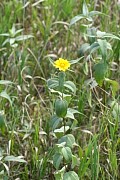
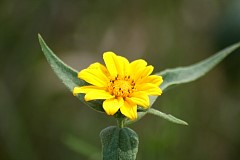
Jerusalem Artichoke (Helianthus tuberosus).
They are a type of sunflower that is known for its edible tuberous
roots as well as its pretty yellow flowers.
I recall a pyramid scheme promote growing
Jerusalem artichokes in the Midwest. Since no real market for the crop
existed, the scheme ended in large losses to growers and prison terms for the perpetrators.
Return to Flora
|
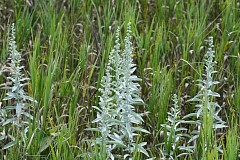
I can't identify this yet.
|
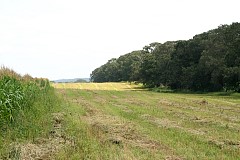
The strip of hay running along Bluebird Treeline has been cut.
|
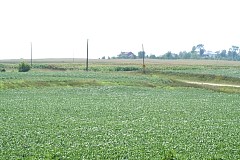
I walked out along Bluebird Treeline and took this shot of the south end of Mile
Drive, showing the fields across Dale Road.
|
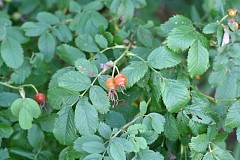
There are many different species of juneberries - the fruits can be red or purple.
Sometimes they are red when young, and purplish or almost black when mature.
They can be used for jam, jelly, and sauce and also makes a fine beverage. Birds
love them. I don't think this is crabapple, since apple trees have simple toothed leaves that
are arranged alternately along the stem, and these are opposite.
Return to Consumables
|
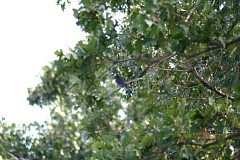
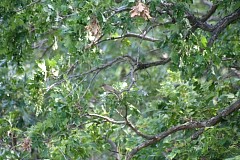
Walking along Bluebird Treeline, here are two shots of bluebirds. When you enlarge
them, the leftmost picture is not in focus, but you can't mistake the blue male Eastern
Bluebird. Enlarging the rightmost picture shows what I believe is a more-dully
colored female. I am using autofocus, since the subject moves quickly, and sometimes
in my pictures the intended subject is not in focus. The female is, however, well
focused.
|
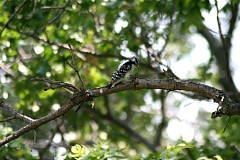
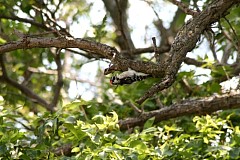
Also in Bluebird Treeline is this Downy Woodpecker. The rightmost picture shows
that they often are seen upside down as they search for food. The picture on the
right is well focused. Since this project is to capture a moment in time, I include
badly focused shots to complete the record.
Return to Birds
|